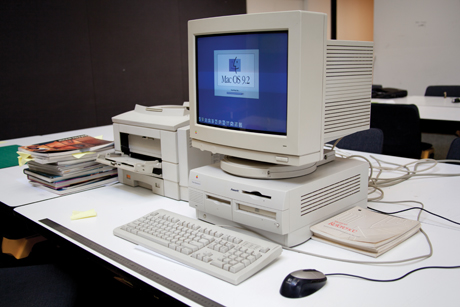Being a savvy young professional in your 20s has its advantages.
Pro: We’re young. We can adapt easily.
Pro: We’ve got better technology than our parents did when they broke into the working world.
Pro: Finding a place to work where you have more freedom and flexibility to work from home is easier than ever.
That’s a big pro for young professionals in 2013. Logging on from home to work is on the rise, too. From 1997 to 2010, there’s been a 5% increase in the number of people that work from home at least one day a week. Having the right tools and resources is imperative, especially if you’re working from home.
Think of the technology we have at our disposal now. But it hasn’t always been that way. So what are the biggest differences in working from home now, and 15 years ago? What tools do we have now that we didn’t then?
Biggest difference #1: Internet options.
A conversation about working from home can’t even begin until you have an Internet connection.
Then, Internet was new (ish) – think about it, in the 90s, everyone was still logging on to AOL to get online access. Can you imagine if the Internet connection you had to work with at home was dial-up? Now there are a multitude of Internet options—which won’t cause you to tie up your parents’ phone line all night.
Just take a look at what Google, Yahoo and other search engines looked like in the AOL era.
The type of Internet, the type of websites and the quality of online access is all far and above what we used to have.
Biggest difference #2: Remote access.
Yes, we know that the type of Internet we have is radically different than the Internet that was being used 15, 20 years ago – but also where you get online is different.
If you were able to work from home in the 90s, what that meant was that you were able to work from one computer, on one desk, in one room. Now, you can work nearly anywhere in your home thanks to Wi-Fi, laptops and smartphones.
All you need is a wireless router, and you’re in business. Most Internet service providers have the option to install one when you order service. If not, you can easily pick one up and install it yourself.
Biggest difference #3: Smartphones.
Remember THAT cellphone? Zach Morris had it all, being able to call from anywhere with his brick cellphone, (now they sell on ebay for upwards of $1,000!). Now with sleek iPads and iPhones, you can check your email from the car, the doctor’s office, the kitchen, the bedroom – anywhere you can get a Wi-Fi connection.
Fifteen years ago, you weren’t expected to respond to emails at all hours of the day. Now, smartphones have changed all that.
Everyone has a smartphone and just about everyone uses it to access email – that means you’re connected to work 24/7. With cloud computing advances, you can sync your many devices together so that you can access the same information across different devices, ensuring you’re constantly able to work.
Smarter technology means using your time more wisely
Because we have the luxury of super-fast Internet and super-flexible schedules, we have the great opportunity to get more work done in more places.
It’s incredible to think that something as simple as a strong Wi-Fi connection wasn’t always something guaranteed when working from home. And, it’s incredible to think what technology and working from home will look like in the next 15 years.
Elizabeth Phillips is a freelance technology writer with a focus on how the Internet improves our lives. She can be found (productively) working from home in Philadelphia, PA.
Image Credit: desktopmag.com.au





